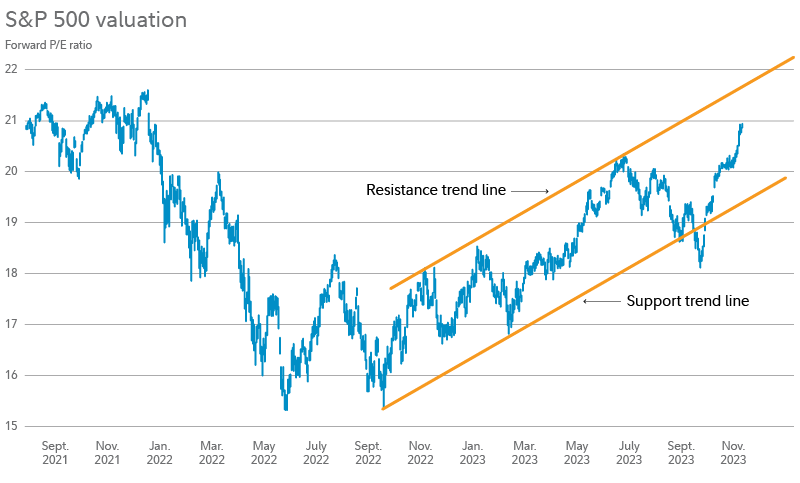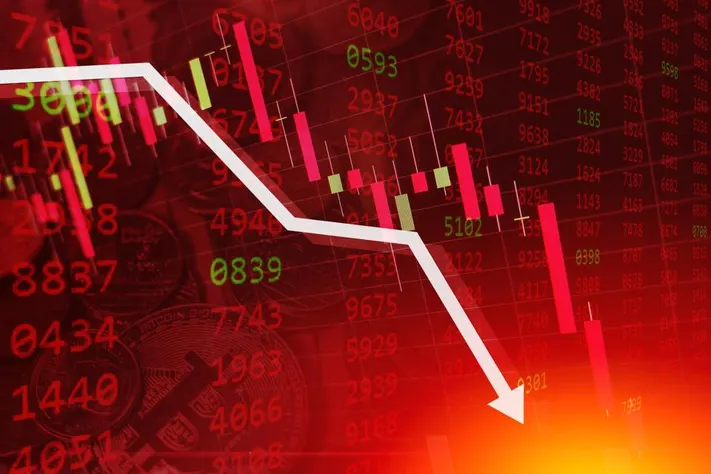Stock market recovery isn’t just a buzzword—it’s your ticket to bouncing back financially. If the downturn’s left your investments feeling the pinch, you’ve got a shot at redemption. This isn’t about luck; it’s about strategy. Are you geared up to grab the bull by the horns? A resilient portfolio can turn the tides in your favor. This guide will be your roadmap to spot key economic signs, smart asset blends, and strategic picks that thrive post-crash. Buckle up! It’s time to steer your investments toward greener pastures.
Understanding the Market Rebound Landscape
Identifying Key Economic Recovery Indicators
When markets crash, we all worry. Will they rise again? How fast? Good news – they do rebound. And certain signs help us spot a recovery. These signs, or economic recovery indicators, are like green shoots after a long winter, showing that growth is coming back.
First, let’s talk jobs. When more people find work, they can spend more. This means businesses do well, and the stocks of those businesses can rise. Another sign is when companies start making more money. If earnings reports look good, it means the economy is picking up.

Interest rates matter too. If rates stay low, it’s cheaper for people and businesses to borrow money. This can boost spending and help stocks climb. Also, watch the housing market. If more folks buy homes, it’s often a sign that they trust the economy to grow.
Lastly, look at consumer confidence. If people feel good about their money, they’ll spend more. This spending can drive up stock prices. So, always keep an eye on these signs. They help us guess when and how the market will rise.
Recognizing Bull Market Signals and Equity Market Rallies
Now, let’s chat about bull markets. A bull market is when the stock market goes up for a time. It means folks are buying more stocks, pushing prices up. To spot a bull market, we look for signs, or signals.
One signal is when the stock prices go up a lot over several months. This can mean investors are confident, and we might be entering a bull market. Also, when more people join in and buy stocks, not just the big investors, that’s another sign.
Sometimes, news or events can kick-off a bull market. Maybe there’s a new invention, or a big problem gets solved. This can make everyone excited about the future, and they buy stocks, expecting good things.
Equity market rallies are like mini bull markets. They are times when stock prices go up fast but might not go up for long. Think of a rally as a happy sprint in a long race. These rallies can happen in bear markets too but don’t get fooled – a few good days don’t make a full-on bull market.
So, why care about bull market signals and rallies? They can tell us it’s a good time to invest. If we spot the signs early, we can put money into stocks that might grow a lot. But always be careful. Markets can change fast, and it’s best to think long-term.
In the end, knowing these signs can help us make smarter choices about our money. No one can guess the market perfectly, but with these tips, we can feel more sure about our investing. And remember, always watch the market and stay informed to grow your money!
Crafting Your Portfolio Recovery Plan
Asset Allocation Strategies for Market Recovery
After a market crash, you may ask, “How do I fix my investments?” The answer: revamp your asset mix. First, pinpoint your current mix of stocks, bonds, and cash. Now, consider tweaking it. A good blend can cushion a portfolio when times are tough and help it grow when markets bounce back.
To get your mix right, look at your goals, time frame, and how much risk feels okay. Many find that putting more into stocks helps after a downturn. This can mean a better shot at taking part in the rebound when it comes.
Rebounding Stock Sectors and Recession-Proof Stocks
Certain sectors often bounce back faster. Tech, healthcare, and consumer goods often lead after a slump. Investing in these can be smart as the economy recovers. Also, some stocks hold up well in bad times. We call these “recession-proof.” These are in industries we always need, like utilities and food.
To find the right stocks, check how they’ve done in past downturns. Look for ones that dropped less than others or recovered quicker. Also, keep your eyes on the news and what it says about the economy. This helps to guess which sectors will get strong again.
In short, to get your investments back on track, rejig your asset mix and pick the right stocks. Go for a blend of growth potential and stability. With some care and smart choices, you can set up for success when markets turn around.
Strategic Investment Approaches Post-Downturn
Analyzing Historic Market Recoveries for Future Gains
Stock market crashes can scare us. But they also teach us. We look at past crashes to plan for future gains. How? By seeing how markets came back before. We find patterns that help us know what might happen next. Like how long recoveries took and which stocks bounced back fast.
For example, after the 2008 crash, it took years for a full rebound. But those who bought stocks when prices were low saw big gains later. We check how the economy comes back after a slump. We look at job numbers, company earnings, and how much folks spend. All these things can tell us if the market will go up again.
Tailoring Bounce-Back Trading Strategies and Long-Term Investments
After a market drop, it’s key to have a solid plan. We start by checking your mix of stocks, bonds, and cash. We want to find the best balance for when markets start to recover. We also pick stocks that look like they might do well as things get better. This means finding companies with strong basics like good cash flow and smart bosses.
We think about both short and long-term. For now, we might pick stocks that react fast to a recovering economy. For later, we look for ones that grow more slowly but can give you stable gains over time. We always have to be ready to adjust if things change. And remember, it’s not just about picking the right stocks. It’s also about when to sell so you can make the most of the market’s ups and downs.
In a tough market, having a guide who gets how this all works can make a huge difference. That’s me. I’m here to help point you and your investments in the right direction as we wait for the next big swing up in the stocks.
Maximizing Growth Opportunities After a Crash
Navigating Market Downturn Opportunities with Growth and Value Stocks
When markets crash, smart investors see chances for big wins. We look for stocks set to soar. I target both growth and value stocks. Growth stocks are like seeds, ready to sprout. Value stocks are like treasure, hidden but shiny once found. A mix of both can boost your bounce back.
To find these gems, watch the market closely. Look for stocks that fell but have strong roots. Check their finances and how they fare against rivals. When you pick well, even a little rise in price can mean big gains. These choices can turn market lemons into lemonade.
Optimizing 401(k) Recovery and Investor Confidence Restoration
Your 401(k) can also recover from hits. First, don’t pull out when fear strikes. That locks in losses. Stick to your plan or talk to a pro to tweak it. Think about the long road, not just today. Keep adding to your 401(k) if you can. Buying low can lead to selling high later.
To get your trust in the market back up, learn from the past. Look at how markets have bounced back before. This can show you what may come. Trust that good investing tactics win over time. Still, go slow. Only risk what you can stand to lose.
After a crash, it’s time to get set for the upswing. With sharp choices and patience, your investments can thrive again. Watch, learn, and act with care. Your future self will thank you!
We’ve covered a lot on bouncing back when the market does. We saw how to spot a market on the mend by looking at key signs and strong market moves. Knowing which parts of your investment mix to tweak can help you make the most of a recovering market. We also talked about picking stocks and sectors that can withstand tough times.
Then, we dug into smart moves to make after things go south in the market. We learned from past comebacks to help us look ahead. Plus, we figured out how to adjust our trade plans and think big picture.
Last up, we tackled how to grab growth chances after a crash. This means choosing the right stocks for growth and value, and fixing up our 401(k) plans to rebuild our nest egg.
In a nutshell: Markets go up and down, but the right moves can help us rise again. Keep these pointers in mind and your money can work hard for you, even after tough times. Let’s keep our investment game strong and ride the waves to success!
Q&A :
How long does it typically take for the stock market to recover?
The duration of a stock market recovery can vary greatly depending on the factors that caused the decline. On average, bear markets—where the market experiences a drop of 20% or more—have historically taken anywhere from several months to several years to recover. It’s important to consider economic indicators, investor sentiment, and global events, as they all play a critical role in how quickly the stock market can rebound.
What factors can influence the speed of a stock market recovery?
Several factors can influence the speed at which the stock market recovers. These include the underlying economic conditions, such as GDP growth rates, employment rates, and inflation. Monetary and fiscal policies implemented by governments and central banks can also impact recovery, as can investor confidence levels. Additionally, global events like trade agreements, geopolitical conflicts, and pandemics can either hasten or delay market recovery.
Can the stock market fully recover after a crash?
Yes, the stock market has historically shown the ability to recover fully after a crash, regaining and often surpassing previous highs. The recovery period can be variable, but over the long term, the stock market tends to reflect the growth and resilience of the economy. Continued economic expansion, corporate earnings growth, and investor participation are key to a full recovery.
How can investors prepare for a market recovery?
Investors can prepare for a market recovery by maintaining a diversified portfolio and avoiding panic selling during downturns. It’s wise to regularly review and adjust investments to align with one’s risk tolerance and financial goals. Staying informed on market trends and economic indicators can help investors identify when a recovery might be underway. Consulting financial advisors for personalized strategies can also be beneficial.
What are the signs that a stock market recovery is starting?
Signs that a stock market recovery is starting might include a sustained increase in stock prices, improvement in economic indicators such as manufacturing activity, consumer spending, and employment rates. A calming of volatility and a return of investor confidence, often evidenced by increased trading volumes, can also indicate the beginning of a recovery. It’s important to note that market recoveries are not typically linear and can experience setbacks.

